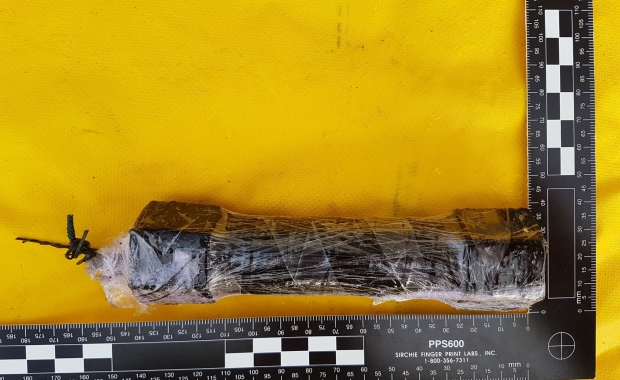The Metropolitan Police has issued a statement urging teenagers and others not to construct improvised explosive devices, reminding people that constructing bombs at home can be dangerous. A home-made pipe-bomb which was discovered at a bus stop in a Reykjavík suburb on Wednesday was detonated by the Coast Guard bomb squad yesterday.
Read more: Police defuse IED, a home-made pipe bomb, found at a bus stop in Reykjavík suburb

The Metropolitan Police issued its statement on Facebook, pointing out that the bomb discovered on Wednesday was a deadly weapon: Had it detonated prematurely or at an unsafe location it could easily have cost lives.
The pipe-bomb, which was discovered Wednesday, could have claimed human lives. Therefore people should notify police immediately if they discover pipe bombs, and under no circumstances try to move the bomb.
In a seperate statement the police urged parents to talk to their children about the danger posed by home-made bombs, the police would like to urge parents to talk to their children about the dangers posed by pipe-bombs.
Not a new problem
The pipe-bomb was most likely created by teenagers. Similar cases have come up regularly since the early 1990s. In 2010, for example, a young man suffered serious injuries and had to be airlifted to the National University Hospital in Reykjavík from a town in South Iceland after a pipe-bomb he was building exploded.
An epidemic of pipe-bomb making occurred in the early 2000s. In a 2003 incidence which received attention in local media teenagers in the town of Keflavík terrorized high-school teachers in the town by exploding pipe bombs near their homes. Two 16 year olds were believed to have masterminded the attacks, going so far as to set up a website with a list of targets and detailed instructions on how to construct pipe-bombs.
The bombing craze of the 1990s
A second major wave of pipe-bomb making occurred in the early 1990s. During the early 1990s numerous bus stops, trash cans and mailboxes in Reykjavík and its suburbs were blown up or damaged by home made explosive devices.
The bombings peaked in January and February, when teenagers were playing with leftover fireworks, using the powder to construct home-made bombs. In early January 1990 the Metropolitan Police issued a warning, reminding people that pipe-bombs were deadly weapons, and could be as dangerous as military hand grenades.
Several serious accidents occurred during these episodes, but no fatalities.
The Metropolitan Police has issued a statement urging teenagers and others not to construct improvised explosive devices, reminding people that constructing bombs at home can be dangerous. A home-made pipe-bomb which was discovered at a bus stop in a Reykjavík suburb on Wednesday was detonated by the Coast Guard bomb squad yesterday.
Read more: Police defuse IED, a home-made pipe bomb, found at a bus stop in Reykjavík suburb

The Metropolitan Police issued its statement on Facebook, pointing out that the bomb discovered on Wednesday was a deadly weapon: Had it detonated prematurely or at an unsafe location it could easily have cost lives.
The pipe-bomb, which was discovered Wednesday, could have claimed human lives. Therefore people should notify police immediately if they discover pipe bombs, and under no circumstances try to move the bomb.
In a seperate statement the police urged parents to talk to their children about the danger posed by home-made bombs, the police would like to urge parents to talk to their children about the dangers posed by pipe-bombs.
Not a new problem
The pipe-bomb was most likely created by teenagers. Similar cases have come up regularly since the early 1990s. In 2010, for example, a young man suffered serious injuries and had to be airlifted to the National University Hospital in Reykjavík from a town in South Iceland after a pipe-bomb he was building exploded.
An epidemic of pipe-bomb making occurred in the early 2000s. In a 2003 incidence which received attention in local media teenagers in the town of Keflavík terrorized high-school teachers in the town by exploding pipe bombs near their homes. Two 16 year olds were believed to have masterminded the attacks, going so far as to set up a website with a list of targets and detailed instructions on how to construct pipe-bombs.
The bombing craze of the 1990s
A second major wave of pipe-bomb making occurred in the early 1990s. During the early 1990s numerous bus stops, trash cans and mailboxes in Reykjavík and its suburbs were blown up or damaged by home made explosive devices.
The bombings peaked in January and February, when teenagers were playing with leftover fireworks, using the powder to construct home-made bombs. In early January 1990 the Metropolitan Police issued a warning, reminding people that pipe-bombs were deadly weapons, and could be as dangerous as military hand grenades.
Several serious accidents occurred during these episodes, but no fatalities.







